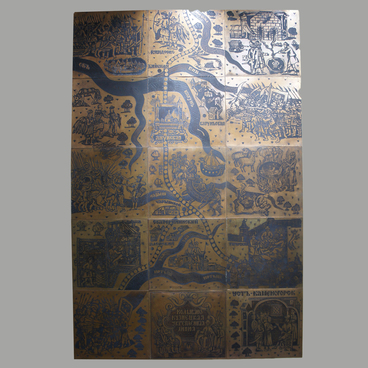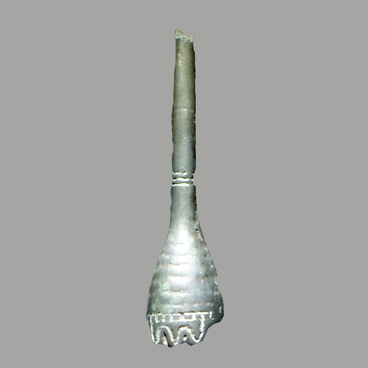This funny-shaped little thing is a talus, otherwise the hucklebone or anklebone (part of the ankle) of a sheep, ram, or another species of smaller cattle. In ancient times, such bones would be collected in Central Asia, Mongolia, Buryatia, and a few other countries and regions. Hucklebones were often used for magic rites; for example, pet hucklebones were used for fortune-telling purposes, and wolf hucklebones were converted into charms.
But in most instances, hucklebones became elements of a popular children’s outdoor game. The rules were quite simple. The participants would place hucklebones inside a circle and then, from a few metres distance, one by one would try and drive all the bones out of the circle with a beater hucklebone. The players were supposed to take a certain stance, keeping balance and taking aim. Hucklebone-beat was among the most widespread games in Central Asia, because it helped kids develop a nice eye for distances, precision, and a sleight of hand.
The bones for the game would be pre-boiled or taken from what was left of meat dishes at dinner. Each player normally had his own set of hucklebones; a shared collection could also be used. However, beaters were not to be shared as a rule.
Every set of bones was unique: the hucklebones differed from each other in shape and weight and consequently performed differently as throwing and hitting implements. The main and largest hucklebone, saka, for one, was the most valuable piece for players. Unlike all other bones, it was not to be boiled prior to the game to prevent losing weight and, consequently, the hitting capacity. Sometimes, the main hucklebone would even be filled with lead.
The hucklebone displayed here was discovered during excavations at the Mayak town site. It is one of the most prominent archaeological monuments of the southern Kemerovo Oblast. The town site is situated within the Novokuznetsk city limits, at the edge of the river Tom terrace. Over the years of Mayak studies, scholars have managed to find artifacts of various ages, including the Late Bronze Age (8th-7th centuries BC), Early Iron Age (5th -3rd centuries BC), and the Middle Ages (11th -13th centuries AD). The findings include knives, scrapers, household accessories, various vessels, arrowheads, and other parts of weapons and everyday life objects. Archaeologists have made so many unique finds helping explore the indigenous people’s living mode in these parts that the Mount Mayakovaya came gradually to be called a magic box.
But in most instances, hucklebones became elements of a popular children’s outdoor game. The rules were quite simple. The participants would place hucklebones inside a circle and then, from a few metres distance, one by one would try and drive all the bones out of the circle with a beater hucklebone. The players were supposed to take a certain stance, keeping balance and taking aim. Hucklebone-beat was among the most widespread games in Central Asia, because it helped kids develop a nice eye for distances, precision, and a sleight of hand.
The bones for the game would be pre-boiled or taken from what was left of meat dishes at dinner. Each player normally had his own set of hucklebones; a shared collection could also be used. However, beaters were not to be shared as a rule.
Every set of bones was unique: the hucklebones differed from each other in shape and weight and consequently performed differently as throwing and hitting implements. The main and largest hucklebone, saka, for one, was the most valuable piece for players. Unlike all other bones, it was not to be boiled prior to the game to prevent losing weight and, consequently, the hitting capacity. Sometimes, the main hucklebone would even be filled with lead.
The hucklebone displayed here was discovered during excavations at the Mayak town site. It is one of the most prominent archaeological monuments of the southern Kemerovo Oblast. The town site is situated within the Novokuznetsk city limits, at the edge of the river Tom terrace. Over the years of Mayak studies, scholars have managed to find artifacts of various ages, including the Late Bronze Age (8th-7th centuries BC), Early Iron Age (5th -3rd centuries BC), and the Middle Ages (11th -13th centuries AD). The findings include knives, scrapers, household accessories, various vessels, arrowheads, and other parts of weapons and everyday life objects. Archaeologists have made so many unique finds helping explore the indigenous people’s living mode in these parts that the Mount Mayakovaya came gradually to be called a magic box.

